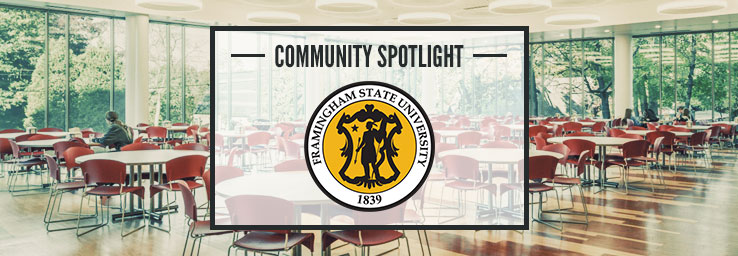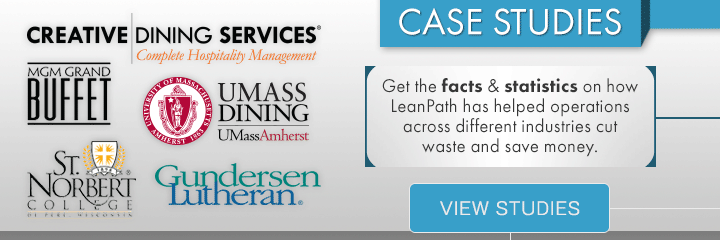Food Waste Intelligence
Subscribe to Food Waste Intelligence
Get our latest posts delivered right to your inbox.

Framingham State University dining services, operated by Sodexo, serves about 1,400 students at each meal Monday through Thursday. They started the LeanPath program in September 2013, installing two trackers for their resident dining operation.
Eric Johnson is the Manager of Culinary Operations as well as the executive chef. He plans the menus, manages food costs and inventory, and performs other duties to keep the dining services running smoothly. LeanPath recently asked him about his experience with the system so far and how they are making waste tracking a part of every employee’s routine.
When you implemented LeanPath, did you have any expectations for the program?
"I really didn’t. We’ve always done a decent job of utilizing waste or reducing waste, so I really didn’t know how much of an effect it would have for us. I was really just curious to see if we could get better, and it seems we have. So it has exceeded my expectations."
Had you ever tried to track food waste before?
"We did, informally; we had logs that we would fill out at the end of the night about how much we were throwing away. But nothing to this degree where it gives you a nice accurate total of weight and dollar amount—nothing as in-depth as that."
What did the waste data you collected with LeanPath reveal in your initial reports?
"It revealed pretty much what we knew—we knew we were wasting in certain areas. The unexpected results have been how much we’re wasting in catering, that’s been a real eye opener. We’re looking to find ways to hold meetings over the next month, to look at all the data from the past and utilize it better."
Has the conversion to a dollar amount helped your operation?
"Putting a dollar value to the waste has helped me communicate the need to prevent waste. Probably the biggest effect we have is the engagement with our employees. They’re really taking it upon themselves to monitor themselves, and that part of it has been really huge."
What changes have you seen in terms of culture?
"It’s the engagement. You just can’t stress it enough, how much it really helps me as the executive chef to have everybody engaged the way they are now—they’re starting to recognize the importance of tracking waste on their own and I don’t have to prompt it as much. It’s really allowed me to focus on food quality rather than having to be on them about not wasting food or overproducing—it’s allowed us to focus more on customer satisfaction."
What is the best part about using the LeanPath System?
"It gets everybody so involved and it spreads waste awareness out over the entire facility. Everybody from the pot washer, to the chef, to the front line server looks at that part of our business and sees it as not only a way to save us money but to better serve our customer."
What would you say to a chef/manager that is not currently tracking food waste?
"Why? If you’re not using LeanPath, you should at least be using an Excel spreadsheet or something like that. In this day and age, to not track food waste is just not doing your job. Tracking food waste should be second nature, and having a program like LeanPath to make it that much easier is just great."
